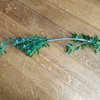Speaking of invasive - anyone have luck removing Creeping Charlie
linlily
17 years ago
Featured Answer
Comments (23)
shadeyplace
17 years agoironbelly1
17 years agoRelated Professionals
Bellflower Landscape Architects & Landscape Designers · Aurora Landscape Contractors · Goodyear Landscape Contractors · Danvers Landscape Contractors · Edinburg Landscape Contractors · La Vista Landscape Contractors · Los Banos Landscape Contractors · Lyndhurst Landscape Contractors · Monterey Landscape Contractors · Oklahoma City Landscape Contractors · Peachtree City Landscape Contractors · Secaucus Landscape Contractors · Southbury Landscape Contractors · Wentzville Landscape Contractors · West Palm Beach Landscape Contractorschazparas
17 years agolinlily
17 years agodollladie
17 years agoentling
17 years agodkathrens77
16 years agoladychroe
16 years agoleslies
16 years agolindac
16 years agodebgrow
16 years agotopsiebeezelbub
10 years agolaceyvail 6A, WV
10 years agoechinaceamaniac
10 years agomori1
10 years agodomino123
10 years agodomino123
10 years agojayco
10 years agomarquest
10 years agotamela_star
10 years agoNeil Smith
8 years agodavidrt28 (zone 7)
8 years agolast modified: 8 years ago
Related Stories

GARDENING GUIDESDo You Have This Invasive Plant in Your Yard?
Garlic mustard is spreading across the U.S. Here’s how to spot it and what to do
Full Story
Houzz Call: What Gives You the Creeps at Home?
Halloween horror got nothing on your basement, attic or closet? Show us that scary spot you steer clear of
Full Story
GARDENING GUIDES6 Plants That Beat Butterfly Bush for the Wildlife Draw
It's invasive, a nonnative and a poor insect magnet. Check out these better alternatives to butterfly bush in the garden
Full Story
HEALTHY HOMEWhat to Know About Controlling Dust During Remodeling
You can't eliminate dust during construction, but there are ways to contain and remove as much of it as possible
Full Story
LANDSCAPE DESIGN10 Ways to Create a Romantic Garden
Delve into a sensual garden design that sings of love and speaks to the senses
Full Story
GARDENING GUIDESHerb Garden Essentials: Grow Your Own Delicious Mint
Pull out a pot for this one. Mint's spreading habit and hard-to-kill nature can be a blessing — if you're properly prepared
Full Story
GROUND COVERSNative Alternatives to English Ivy, Japanese Pachysandra and Periwinkle
These shade-loving ground covers are good for the environment and say something about where you are
Full Story
GARDENING GUIDESGarden-Friendly Native Alternatives to Overplanted Exotics
There are lots of gorgeous, wildlife-friendly native plants ready to make an appearance in your garden
Full Story
MOST POPULARThe Not Naturally Organized Parent's Guide to the Holidays
This year get real about what you can and cannot handle, and remember the joys of spending time with the ones you love
Full StoryMore Discussions









birdnesthead